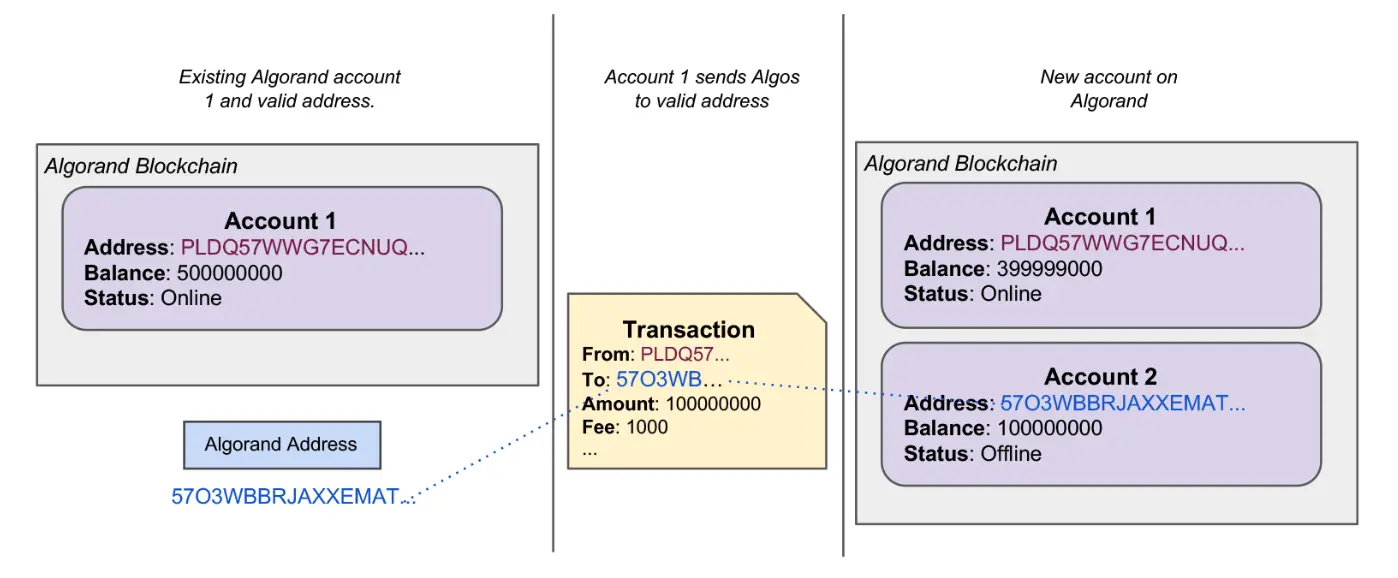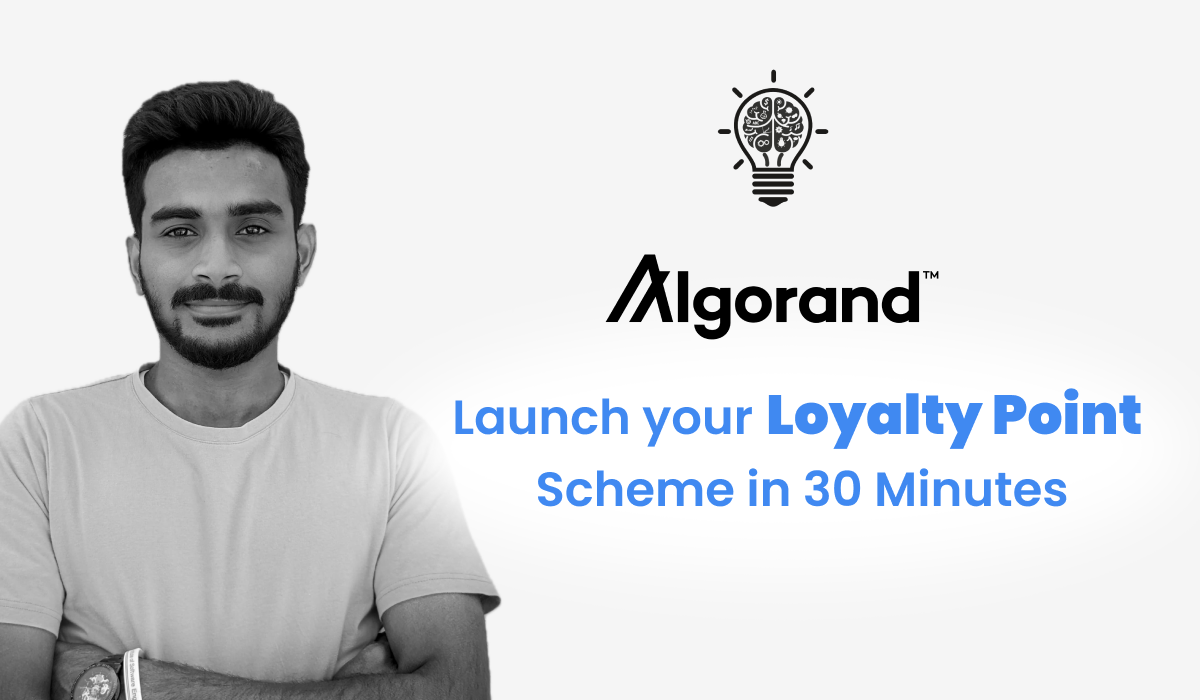Tokenization is transforming loyalty programs. It provides a more adaptable, safe, and expandable method for managing rewards. It is very beneficial for merchants and also businesses.
Tokenization converts loyalty points into digital tokens for easy transfer, trade, or redemption across platforms, enhancing user experience, transparency and engagement. Tokens, working across various loyalty programs and industries, allow efficient accumulation and redemption of rewards, thereby increasing the value of loyalty points for customers. Tokenization removes intermediaries in reward transactions, lowers business costs, and enables more appealing rewards for customers. Blockchain-based tokenization securely stores customer data, protects privacy, and boosts trust in the loyalty program. Tokenization allows for immediate transactions, enabling customers to instantly earn and redeem rewards, thereby improving user experience and satisfaction.
Why Algorand ?
Algorand is a layer 1 blockchain, which serves as the foundational layer of blockchain technology and Algorand also has its native currency called Algo. Fees are low for creating assets, making transactions, and other actions on the Algorand network. As a example the minimum fee for a transaction is 0.001 Algos which is similar to 1000 microAlgos. The performance is also very high in this Algorand Blockchain.
Process of it
Enabling loyalty points through Algorand tokenization involves certain steps and engagement points.
- Setup Algorand Development Area: Establish a connection with the Algorand network. This could be either the main network or a test network.
- Create Algorand Account: Generate an Algorand account which will be used to issue and manage the tokens.
- Token Creation: Use the Algorand Standard Asset (ASA) functionality to create a new token. This token will represent the loyalty points.
- Distribution of Tokens: Distribute the newly created tokens to the customers’ Algorand accounts. This can be done based on the loyalty points they earn.
- Redemption of Tokens: Set up a mechanism for customers to redeem their tokens. This could be through a specific application or website.
- Engagement Points: Regularly engage with customers to make them aware of the benefits of the tokenized loyalty program. This could be through email notifications, in-app messages, etc.
Remember, each step requires careful planning and execution to ensure the success of the tokenized loyalty program. It’s also important to comply with all relevant regulations and laws.
Development of Algorand Blockchain
Developing on Algorand blockchain involves using tools like AlgoSDK to interact with the blockchain. Developers can create smart contracts, handle transactions, and manage assets programmatically, enabling a wide range of decentralized applications.
To begin development, we need to install algosdk library and import algosdk, a crucial step in initializing our Algorand blockchain project. The example is as follows:
const algosdk = require("algosdk"); // Import AlgoSdk Library
Algorand Accounts

Algorand accounts are necessary for creating and managing Algorand Standard Assets (ASAs), which are used to represent the loyalty points in the form of tokens. The use of Algorand accounts ensures that the tokens representing loyalty points are securely stored and transferred.
A developer can create an Algorand account in the blockchain and it includes,
- Public Key: Use for see details of account, creation of assets and transactions.
- Private Key: Use to sign transactions for security purposes.
- Mnemonic Phase: Use for recover account details if loss account public address.
To create an account on Algorand, we can utilize the generateAccount() method provided by AlgoSdk.
let creator = algosdk.generateAccount();
let receiver = algosdk.generateAccount();
To continue further development process we need to create an Algo Client using server, port and token.
const token = "YOUR TOKEN HERE";
const server = "https://testnet-api.algonode.cloud/";
const port = "PORT HERE";
// Algo Client creation
let algodClient = new algosdk.Algodv2(token, server, port);
To view account information, follow this example.
const findAccountDet = async function (accountAddr) {
let account_info = await algodClient.accountInformation(accountAddr).do();
console.log(account_info)
}
Algorand Standard Asset

Algorand Smart Assets are tokens built on the Algorand blockchain that can represent any type of asset, such as currencies, securities, or real-world assets, in a digital form including loyalty points. They are highly versatile and customizable.
Creating an ASA is a straightforward process that doesn’t require complex smart contracts. This makes it easier for businesses to implement their tokenized loyalty program. Creating an ASA is a straightforward process that doesn’t require complex smart contracts. This makes it easier for businesses to implement their tokenized loyalty program.
Create ASAs
The type of asset that is created will depend on the parameters that are passed during asset creation and sometimes during asset re-configuration.
const createLoyaltyAsset = async function () {
const suggestedParams = await algodClient.getTransactionParams().do();
const txn = algosdk.makeAssetCreateTxnWithSuggestedParamsFromObject({
from: creator.addr, // Asset creator address
suggestedParams,
defaultFrozen: false,
unitName: 'LOYALTY_POINT', // Asset unit (BTC)
assetName: 'Loyalty point', // Asset name (Bitcoin)
manager: creator.addr,
reserve: creator.addr,
freeze: creator.addr,
clawback: creator.addr,
assetURL: "LOYALTY URL", // Information url
total: 1000, // Total issuance
decimals: 0, // Divisible amount
});
const signedTxn = txn.signTxn(account.sk); // Sign transaction
await algodClient.sendRawTransaction(signedTxn).do();
// Wait for confirmation
const result = await algosdk.waitForConfirmation(
algodClient,
txn.txID().toString(),
3
);
const assetIndex = result['asset-index']; // Created asset index
return assetIndex;
}
- Manager Address: The manager account is the only account that can authorize transactions to re-configure or destroy an asset.
- Reserve Address: Specifying a reserve account means non-minted assets are held there. Transfers from this account create new asset units. If changing reserve addresses, ensure the new account opts in and transfer all assets.
- Freeze Address: The freeze account can freeze or unfreeze asset holdings for a specific account, restricting its ability to send or receive assets. This is similar to freezing assets in traditional finance for various reasons. If DefaultFrozen is True, use unfreeze to allow trading after KYC/AML checks.
- Clawback Address: The clawback address can transfer assets to or from any holder who has opted in. It's used to revoke assets for breach of contractual obligations, similar to a clawback in traditional finance.
If any of these four addresses is set to "" that address will be cleared and can never be reset for the life of the asset. This will also effectively disable the feature of that address. For example setting the freeze address to "" will prevent the asset from ever being frozen.
Distribution of ASAs

Need to distribute loyalty tokens among customer's algorand accounts based on loyalty points they earned.
To transfer ASAs among account as follows
const transferLoyaltyAsset = async function(){
const suggestedParams = await algodClient.getTransactionParams().do();
// Opt In function
const optInTxn = algosdk.makeAssetTransferTxnWithSuggestedParamsFromObject({
from: receiver.addr, // Receiver address
to: receiver.addr,
suggestedParams,
assetIndex: "ASSET INDEX",
amount: 0
});
const signedOptInTxn = optInTxn.signTxn(receiver.sk);
await algodClient.sendRawTransaction(signedOptInTxn).do();
await algosdk.waitForConfirmation(algodClient, optInTxn.txID().toString(), 3);
const xferTxn = algosdk.makeAssetTransferTxnWithSuggestedParamsFromObject({
from: creator.addr, // Sender address
to: receiver.addr, // Receiver address
suggestedParams,
assetIndex: "ASSET INDEX",
amount: "AMOUNT" // Amount that transfer
});
const signedXferTxn = xferTxn.signTxn(creator.sk); // Sign transaction
await algodClient.sendRawTransaction(signedXferTxn).do();
await algosdk.waitForConfirmation(algodClient, xferTxn.txID().toString(), 3);
}
By leveraging Algorand's tokenization capabilities, businesses can seamlessly integrate loyalty points into their operations, enhancing customer engagement and loyalty.
In conclusion, launching your own loyalty point scheme using Algorand tokenization can be a quick and straightforward process, taking just 30 minutes of your time. B y leveraging Algorand's efficient blockchain technology, you can create a secure and transparent loyalty system that offers unique benefits to your customers. With the step-by-step development guide provided, you have the tools and knowledge to implement this innovative solution and enhance customer engagement for your business.
You can learn more about Algorand Development using the following link: https://developer.algorand.org/docs
#ceyentra #blockchain #algorand #loyaltypoints




